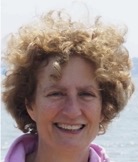Nov 2024

Abstract:
Chlamydomonas reinhardtii
Iron-sulfur (Fe-S) proteins in the chloroplast play important role, not only in the light but also in the dark and in anoxia. Chloroplastic Fe-S proteins are assembled by the SUF machinery and then transferred to the client Fe-S proteins using dedicated maturation factors, including NFUs. NFU1 is one of the two predicted chloroplastic NFU proteins present in Chlamydomonas [1]. Two insertional nfu1 mutants and complemented lines were analyzed. The physiological and molecular analyses revealed that the growth in control light conditions and photosynthesis were not impacted. However, further analyses under specific growth conditions pointed to a role of NFU1 in the maturation of [4Fe-4S] clusters present notably (i) in the dark-operative protochlorophyllide a oxidoreductase (DPOR) responsible for chlorophyll synthesis in the dark and (ii) in several Fe-S enzymes involved in the fermentative metabolism.
Galdieria sulphuraria
Heterotrophic growth is an alternative to photoautotrophic growth for algal biomass production. The growth parameters and biomass composition of G. sulphuraria were compared when grown on an equivalent molar concentration of carbon from various carbon sources: glucose, glycerol, acetate and xylose [2,3]. The choice of these different carbon sources is justified by their low cost: glycerol is a byproduct of the transesterification process used to produce biofuels from triacylglycerides while glucose, acetate and xylose are the main carbon sources from hemicellulose hydrolysis. The advantages and drawbacks of each of these sources (or a mix of them) will be discussed.
Bio:
Claire Remacle earned her Master’s degree in Botany in 1989. She then began work on a doctoral dissertation concerning the mode of transmission of the mitochondrial genome of the green microalgae Chlamydomonas reinhardtii in the laboratory of Microorganism genetics at ULg, under the supervision of Fr. René-Fernand Matagne. Once she had obtained her doctoral degree, Claire Remacle obtained a grant from EMBO to study at the Institute of Molecular Plant Biology in Strasbourg, where she studied the potato.
Returning to Belgium in 1996, Remacle rejoined the Genetics and Physiology of Microalgae laboratory, and was named FNRS research associate. In 2003 she became an instructor. Now head of the laboratory, she supervises research on mitochondria in microalgae. Like mitochondria are key components for energy production and accumulation of biomass and molecules that could be used as alternatives to fossil fuels such as triacylglycerides or hydrogen, she also conducts research on the discovery and analyses of enzymes controlling energetic processes, metabolism and photoproduction of biohydrogen.